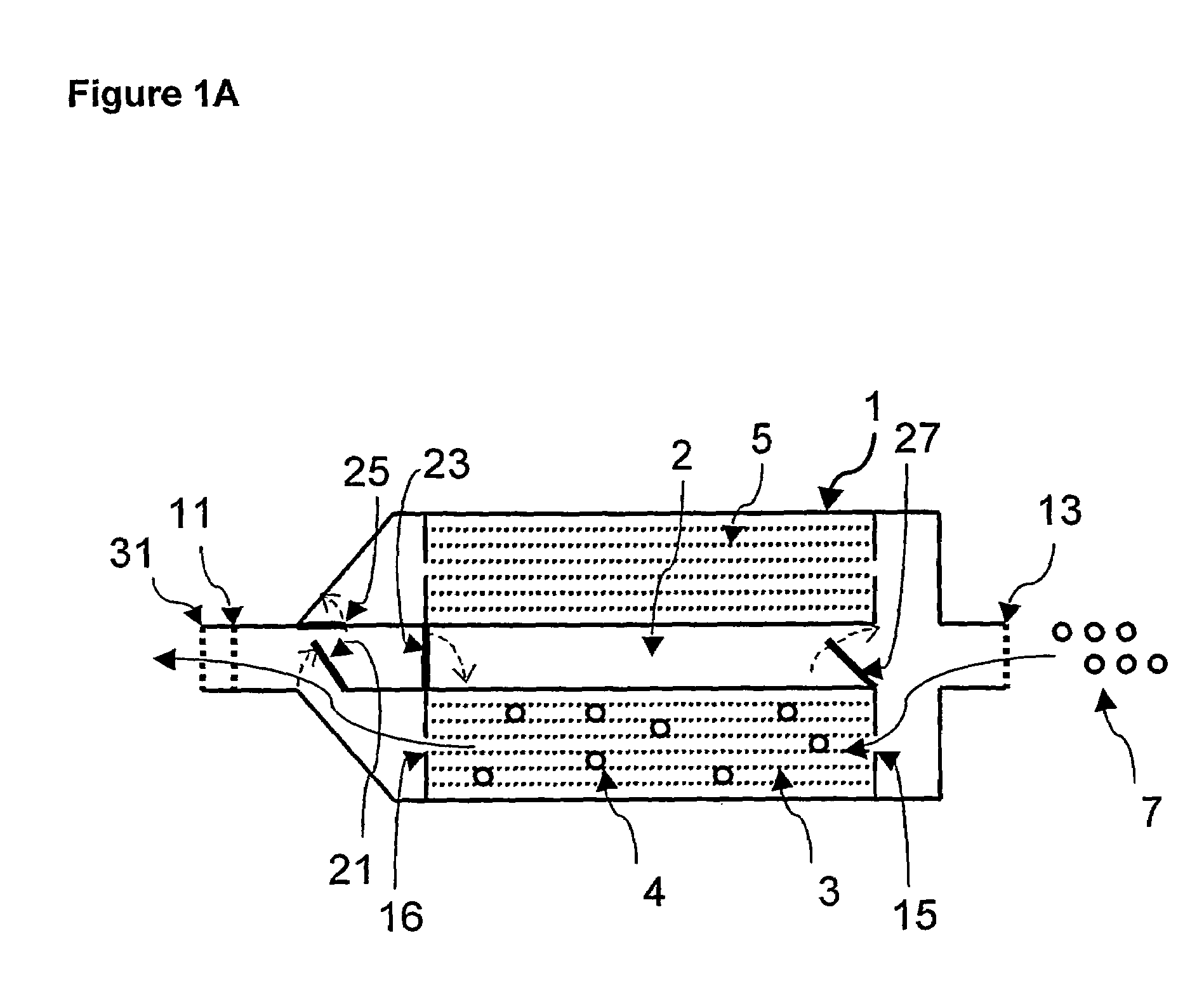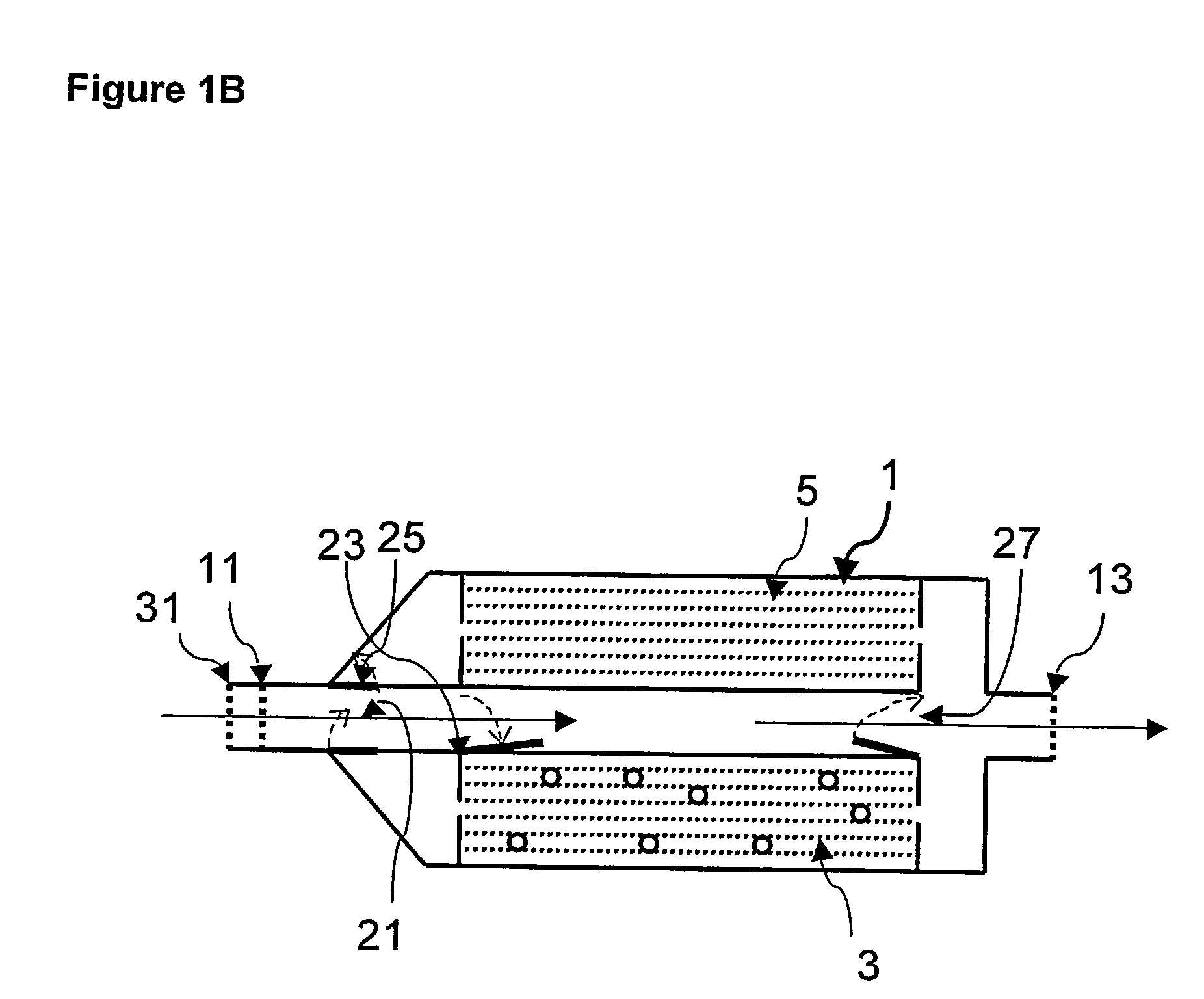Methods of collecting and analyzing human breath
a technology of exhaled breath and sample collection, which is applied in the field of methods for collecting and analyzing exhaled breath samples, can solve the problems of limiting their widespread use, affecting the progress of breath testing for various diseases and drug monitoring, and the difficulty of detecting very low concentrations, so as to achieve efficient capture of breath compounds for analysis, reliable results, and minimal energy and space
- Summary
- Abstract
- Description
- Claims
- Application Information
AI Technical Summary
Benefits of technology
Problems solved by technology
Method used
Image
Examples
example 1
Menthol Detection
[0082]Analysis of a gas sample of menthol was produced in accordance with the present invention. Menthol is a common agent in chewing gum and cigarettes. A sample of menthol crystals (200 mg, Spectrum Chemical) was placed into a 20 ml glass vial placed into a water bath at 37° C. Breathing was simulated using a Pulmosim (Blease) set for 1000 ml breaths and a one-way valve connected at the output to produce an exhaled breath every 10 seconds. The vial was connected to the bottom of a ½″ T-connection and allowed flow to travel over the headspace of the menthol, liquid at 37° C. A stopper was fixed to the other side of the T-connector and a 1 liter Tedlar bag (1 breath) and sorbent tubes (12 inches long, ¼″ diameter) with 2 g of Tenax GC (20 / 35, Alltech) and Carbotrap (20 / 40, Supelco) were connected for sampling.
[0083]The detection system currently utilizes a PC / TD 4-SAW setup as shown in FIG. 3. Three of the four SAW sensors were coated with ethyl-cellulose (A), polyi...
example 2
Pentane Detection
[0084]Analysis of a gas sample of pentane was produced similar to Example 1 in accordance with the present invention. Polyunsaturated fatty acids are found in the cellular and subcellular membranes and are prone to lipid peroxidation as a result of the extremely weak binding of the hydrogen atoms to the carbon chain. Increased breath alkanes, particularly ethane and pentane, have demonstrated increased oxidative stress in breast cancer, rheumatoid arthritis, heart transplant rejection, acute myocardial infarction, schizophrenia, and bronchial asthma (Phillips 1992). A sample of n-pentane (1 ml, Fisher, HPLC grade) was similarly placed into a 20 ml glass vial placed into a water bath at 37° C. Samples were collected in a Tedlar bag and onto Tenax GC and Carbotrap sorbent tubes and analyzed using the 4-SAW sensor array. The SAW resonator frequencies were simultaneously monitored after desorption from the thermal desorption column again producing 4 individual profiles ...
example 3
Ethanol Detection
[0085]Analysis of a gas sample of ethanol production from E. coli culture was produced similar to Example 1 in accordance with the present invention. Ethanol has been previously observed in E. coli fermentation, as well as Clostridium, using headspace sampling and GC analysis. One milliliter samples of ethanol, 1-isopropanol (internal standard), and acetic acid standards, as well as E. coli culture, were similarly placed into a 20 ml glass vial placed into a water bath at 37° C. Direct headspace sampling, as well as samples collected in a Tedlar bag and onto Tenax GC and Carbotrap sorbent tubes similar to Example 1, were analyzed using the 4-SAW sensor array. GC chromatograms with 1-propanol internal standard were also identified using a Varian 3600 GC with an HP 19395A of Lowry broth and E. coli showed peaks corresponding to ethanol, which is produced by E. coli during the fermentation process, 1-propanol, and acetic acid, which is a component of Lowry broth, at 2....
PUM
| Property | Measurement | Unit |
|---|---|---|
| diameter | aaaaa | aaaaa |
| temperature | aaaaa | aaaaa |
| temperature | aaaaa | aaaaa |
Abstract
Description
Claims
Application Information
 Login to View More
Login to View More - R&D
- Intellectual Property
- Life Sciences
- Materials
- Tech Scout
- Unparalleled Data Quality
- Higher Quality Content
- 60% Fewer Hallucinations
Browse by: Latest US Patents, China's latest patents, Technical Efficacy Thesaurus, Application Domain, Technology Topic, Popular Technical Reports.
© 2025 PatSnap. All rights reserved.Legal|Privacy policy|Modern Slavery Act Transparency Statement|Sitemap|About US| Contact US: help@patsnap.com



